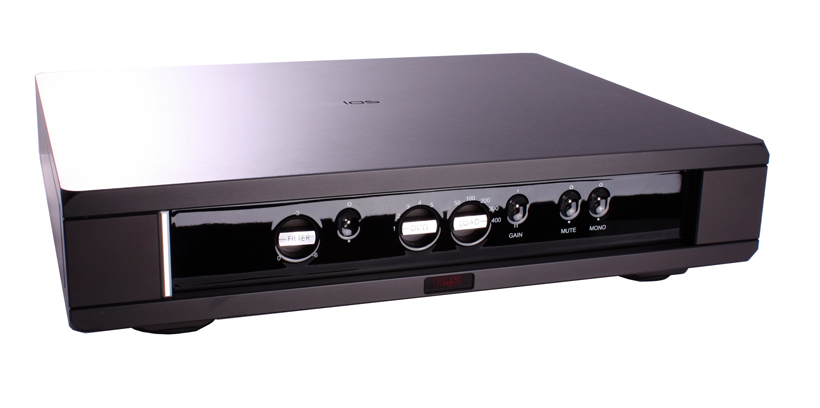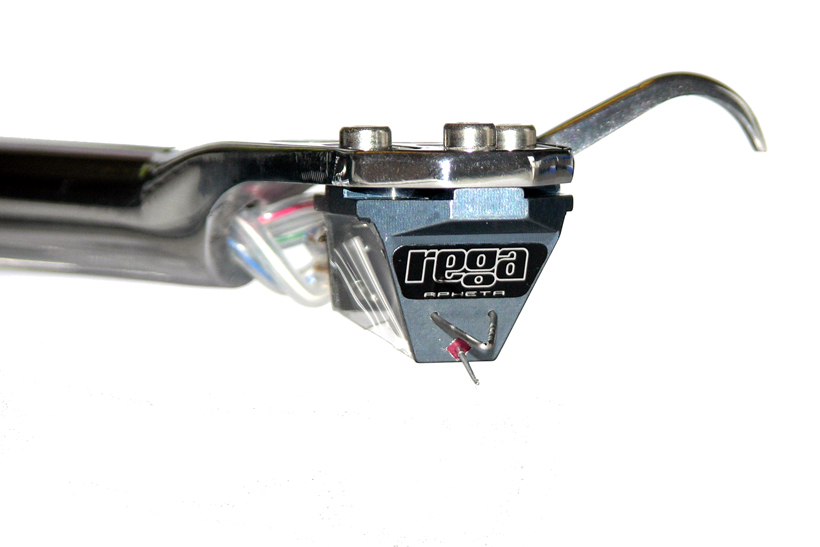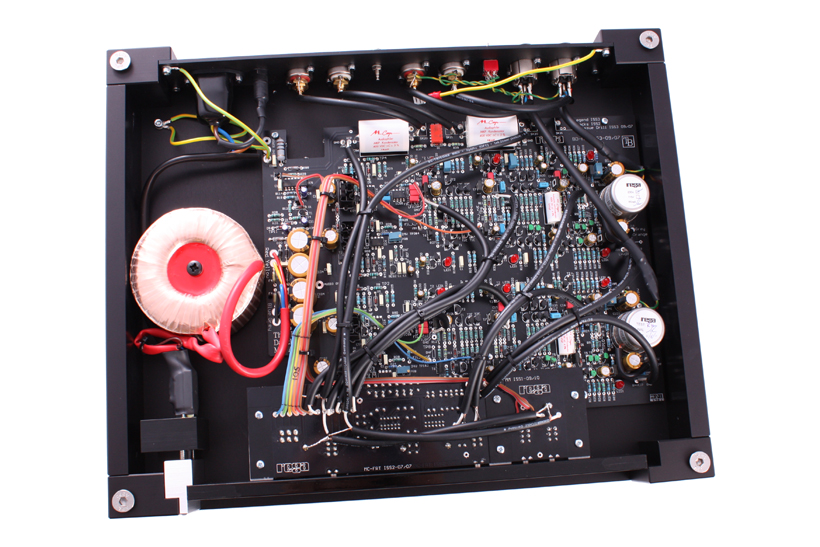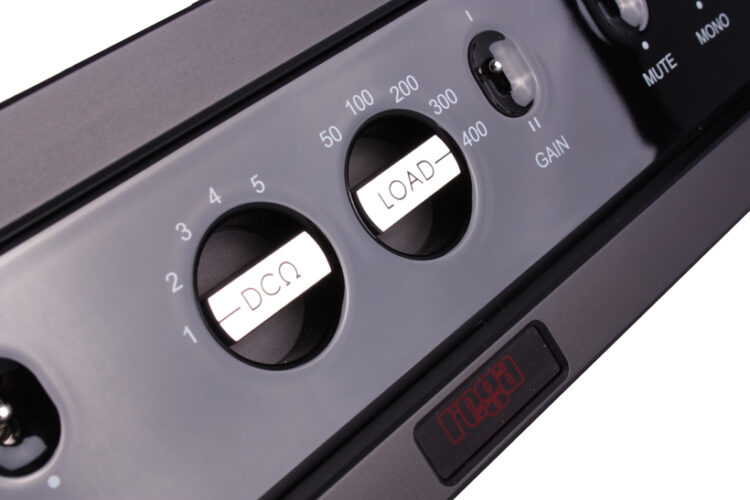With its range of half width cased components Rega has very shrewdly taken over the mantle that Naim created but which it has subsequently abandoned in favour of more conventionally sized components. Cyrus has been in this market for sometime but the distinctive styling of its components has meant that they have never really competed for the hearts of those weaned on the NACs and NAPs of the eighties and nineties. This is not merely a styling exercise, products like the Brio-R and Apollo-R have a sonic character that is very much in the spirit of classic Naim kit. They are extremely musical and not overly bothered about the niceties of audiophile fancy, inky black backgrounds and filigree detail are available but not the point of the products. Rather they bring a vitality and musicality to the listening experience that is so involving that only the most hard hearted can fail to engage with the music they play. I like a bit of fine detail myself and not much is more thrilling than bass that agitates the internal organs but much of my listening for pleasure is done with a Brio-R and Rega DAC. These are partnered with Living Voice OBX-R speakers which tame the Rega’s youthful enthusiasm but the combination is remarkably enjoyable and provides a conduit for practically all my music reviews. Given the pricing they represent excellent value for those looking to make the most of their music.
You can of course extract more resolution and greater musicality if the design principles embodied in these products are given more budgetary scope. This is a vein that Rega started tapping with its Reference range, the Isis CD player and Osiris amplifier, technology from which undoubtedly informed the aforementioned half width designs. Rega’s Terry Bateman used the R&D scope afforded the Isis to produce the Apollo-R and ditto Osiris and Brio-R. The bigger components cost about ten times as much, weigh significantly more and yet maintain the same sonic character just at a higher resolution. The latest addition to Rega’s reference range is the Reference Ios, a monster of a phono stage that is a very similar size and weight to the Osiris amplifier, I would be surprised if the two didn’t share certain chassis parts. The most obvious reason for the weight is the use of very thick (15mm) aluminium slabs in the chassis. By contrast the back panel where the sockets reside is not metal but ABS or similar, presumably to minimise resonance but also for electrical isolation.
The front panel bristles with attractively sculpted controls and switches yet this is a dedicated moving coil phono stage, designed with more than half an eye on delivering maximum results with Rega’s Apheta MC cartridge. However, the five input impedance levels and a corresponding array of DC resistance options mean that all manner of MCs can be accommodated.

Having left this beast on for an hour or two to get up to its fairly high optimal operating temperature I connected up the output of an SME Series V attached to a Model 20/3 turntable and sporting a van den Hul Condor cartridge. With impedance set to the max (400 Ohms, the Condor likes around 1 kOhm) the first qualities that became apparent were low noise and low bass extenstion, alarmingly so in fact. The superb Premonition Records remix of Patricia Barber’s Café Blue delivered its full load of low end gravitas on the track Mourning Glory. That and the cymbal work of Mark Walker, the hypnotic guitar of John McLean and Ms Barber’s soaring voice combined to deliver a totally immersive experience. The power that the Ios manages to deliver turns this track into a far more substantial and moving experience. It may be audiophile fare but that doesn’t stop it delivering emotional depth.
Because I had the time and inclination I decided to do something a little controversial and put a Funk FXR tonearm on the SME to find out if it would work. It does so extremely well with the Condor on a Townshend Rock 7 but that has a trough to control resonance, would it work without it? The short answer is, yes, extremely well. I’d go so far as to say that the low mass of the FXR is a better match to the high compliance Condor than the Series V. The bass gets into the floor more effectively and the dynamics spring from the speakers with greater ease and fluency, the Ios allowing both the sound and the music through in equal measure. Now the cymbal work on Mourning Grace had a raindrop quality that was previously hidden and overall the piece brought a lump to my throat. This is a powerful phono stage in all the right ways, it gets to your sternum and your heart and reveals just why vinyl is still the ultimate format.
Imaging is rock solid, each of the player’s on Conjure’s multi-layered Betty Ball’s Blues is given space to work out in, the acoustic character of each being distinct and clear without undermining the flow of the tight but loose groove. Images on this particular album (Music for the Texts of Ishmael Reed) are pushed forward of the speakers for the most part and placed slightly wider but the lead vocal remains central and deep in the soundstage, a precision that you rarely encounter with phono stages of any stripe let alone those that have this degree of musicality.
I revelled in the full flavoured bass line and the way that everything is presented in a clean and tidy yet simultaneously relaxed fashion. There’s no need to play loud to get the full effect of the music but there is a strong inclination to do so nonetheless, merely because it sounds so good. Rather better it has to be said than the best I can muster with computer audio, the Conjure album is so good that after I discovered it as an HD Tracks download I found it on vinyl so it makes an interesting comparison even if my file playing hardware is not in the same price league as this vinyl front end. The vinyl has more body, weight, definition of leading edges and all round musicality than the file. I have fallen into a bad habit of playing most of my music with the Mac but results like this make me realise that I’m missing out by doing so. It might be interesting and revealing but it’s not so much fun.
The Ios is remarkably clean, that is in the sense of perceived distortion, yet it does not sound exposed in the way that ‘clean’ can suggest. There is plenty of musical ‘dirt’, backgrounds are rich in detail because a lot more information is being delivered right down to the lowest level. Any component that gives you too clean a background with dense music is probably leaving the quiet stuff out, the aforementioned ‘inky blackness’ is something you only get with very sparse music or systems that have limited ultimate transparency.

Having enjoyed such fabulous results with the Condor I hit on the inspired idea of requesting a sample of Rega’s Apheta cartridge to try with the Ios. I’ve never used an Apheta before and have always been keen to hear one but had never had the opportunity, this I realised was it, so the call was made and with a bit of coercion a cartridge was extracted from Southend. I carefully mounted it on the RB303 of a Rega RP6, it didn’t seem right putting it on the Funk FXR what with its three point mounting. And while a £920 cartridge might seem excessive on a £798 turntable the philosophical coherence made it a very happy pairing, one that proved a severe distraction as soon as I put Jeff Beck Live on the felt mat. What it reveals is just how good he was in the seventies, you hear the energy, finesse and groove of the man in the context of some very funky bass playing and, it has to be said, some pretty awful singing. Beck and Jan Hammer made some great music together in the seventies, it's time that Jan was dragged away from LA and put onstage alongside his old mucker just to hear them do it again. The combinaiton of RP6, Apheta and Ios makes it all but impossible to listen to anything but the quality of composition and musicianship, the hardware disappears, leaving you with the full colour of the recording. Which includes it's good and less good points although the latter seem far less apparent than they often can. There is massive contrast between recordings as should be the case given the huge variation that the recording, mastering and pressing process is capable of, especially when you listen to music made at widely different points in history.
It can't make OK music great but it can bring out the greatness in music that contains this rare quality, Classic Records’ superb pressing of Leo Kottke's 1971 masterpiece 6 & 12 String Guitar sounds good on most decent record players but with the Rega system it also gives up its full motherlode of musical magnificence, not to mention the radiant finger picking of a man who had few peers in this department. His 1983 album Time Step on the other hand has a distinctly eighties style of compression and overblown drum sound, musically it's pretty strong especially when he sticks to playing rather than singing but the sound lacks the natural ease of the analogue recording on the earlier album.
It should be apparent by now that I got a fabulous result with the Ios, especially when teamed with its natural partner the Apheta. The effortless resolution and musicality of this system is on a par with the best in the business which makes the cartridge in particular look like pretty fantastic value.



